Category: policies
Updated Caste Census
21, Apr 2023

Why in News?
- With the Congress party joining the chorus for an updated caste census, there seems to be an emerging consensus among the political opposition on the need for this exercise.
About the Issue:
- The central government accepted recommendations to use the Socio-Economic Caste Census in 2017:
- It will help in the identification of beneficiaries and transferring of funds for social schemes.
- It aims to bring out the unseen aspects of caste groups and their share in resources.
Why Caste Census is difficult?
- SECC that was first conducted in 2011 and collected data of 130 crore Indians threw up 46 lakh different caste names whereas the total number of castes as per the last caste census of 1931 was 4,147 at the national level.
- Owing to the flaws in the data set, government has refused to make public even the raw caste data of the SECC-2011.
- The SECC-2011 collected data of all castes and not only OBCs.
- There are separate OBC lists at the State-level and the Centre for reservation in government jobs and education.
What is a Census?
- The origin of the Census in India goes back to the colonial exercise of 1881.
- Census has evolved and been used by the government, policymakers, academics, and others to capture the Indian population, access resources, map social change, delimitation exercise, etc.
- However, as early as the 1940s, W.W.M. Yeatts, Census Commissioner for India for the 1941 Census, had pointed out that “the census is a large, immensely powerful, but blunt instrument unsuited for specialized inquiry.”
What is SECC 2011?
- The Socio-Economic Caste Census of 2011 was a major exercise to obtain data about the socio-economic status of various communities.
- It had two components: a survey of the rural and urban households and ranking of these households based on pre-set parameters, and a caste census.
- However, only the details of the economic conditions of the people in rural and urban households were released.
- The caste data has not been released till now.
- SECC 2011 was conducted by three separate authorities but under the overall coordination of Department of Rural Development in the Government of India.
- Census in Rural Area has been conducted by the Department of Rural Development (DoRD).
- Census in Urban areas is under the administrative jurisdiction of the Ministry of Housing and Urban Poverty Alleviation (MoHUPA).
- Caste Census is under the administrative control of Ministry of Home Affairs: Registrar General of India (RGI) and Census Commissioner of India.
Difference between Census & SECC:
- The Census provides a portrait of the Indian population, while the SECC is a tool to identify beneficiaries of state support.
- Since the Census falls under the Census Act of 1948, all data are considered confidential, whereas all the personal information given in the SECC is open for use by Government departments to grant and/or restrict benefits to households.
How have caste details been collected so far?
- While SC/ST details are collected as part of the census, details of other castes are not collected by the enumerators.
- The main method is by self-declaration to the enumerator.
- So far, backward classes commissions in various States have been conducting their own counts to ascertain the population of backward castes.
What kind of caste data is published in the Census?
- Every Census in independent India from 1951 to 2011 has published data on Scheduled Castes and Scheduled Tribes, but not on other castes.
- Before that, every Census until 1931 had data on caste.
Pros of caste census:
- The precise number of the population of each caste would help tailor the reservation policy to ensure equitable representation of all of them.
Concerns associated:
- There is a possibility that it will lead to heartburn among some sections and spawn demands for larger or separate quotas.
- It has been alleged that the mere act of labelling persons as belonging to a caste tends to perpetuate the system.
Right to Health
08, Apr 2023
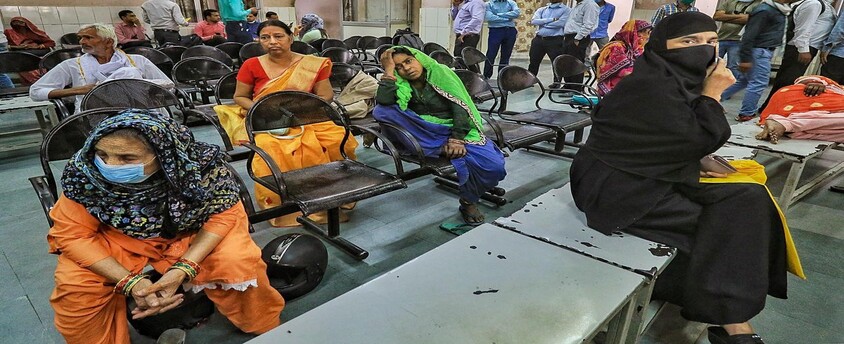
Why in News?
- In India’s government hospitals, where the wards are overcrowded, and people, sometimes unlettered, always overwhelmed, come from the smallest villages, bed numbers are all important for reference.
What are the Key Features of the Bill?
- Free healthcare services, including consultation, drugs, diagnostics, emergency transport, procedure and emergency care, will be provided at all public health institutions and select private facilities subject to conditions specified in the rules.
- The Bill makes it mandatory for the hospitals to provide treatment in emergency cases without waiting for medico-legal formalities and give medicines and transport facilities without charging money.
- The implementation of the law is expected to do away with out-of-pocket expenditure and bring transparency and accountability within the health care system.
What is the Right to Health?
- Right to health refers to and means the most attainable levels of health that every human being is entitled to.
- The origin of the right to health dates as far back as 1946 when the first international organization, World Health Organisation (WHO) came into existence to formulate health terms as human rights.
- The right to health is an essential component of human dignity, and it is the responsibility of governments to ensure that this right is protected and promoted for all individuals, regardless of their gender, race, ethnicity, religion, or socioeconomic status.
- Part IV of the Constitution under the Directive Principles of State Policy (DPSP) ensures social and economic justice to its citizens.
- Therefore, Part IV of the Constitution directly or indirectly relates to public policy in terms of health.
Related Provisions in India:
- International Conventions: India is a signatory of the Article 25 of the Universal Declaration of Human Rights (1948) by the United Nations that grants the right to a standard of living adequate for the health and well-being to humans including food, clothing, housing and medical care and necessary social services.
- Fundamental Rights: Article 21 of the Constitution of India guarantees a fundamental right to life & personal liberty. The right to health is inherent to a life with dignity.
- DPSP: Articles 38, 39, 42, 43, & 47 put the obligation on the state in order to ensure the effective realization of the right to health.
- Judicial Pronouncements: Supreme Court in Paschim Banga Khet Mazdoor Samity case (1996) held that in a welfare state, the primary duty of the government is to secure the welfare of the people and moreover it is the obligation of the government to provide adequate medical facilities for its people.
- Also, in its landmark judgment in Parmanand Katara Vs Union of India (1989), Supreme Court had ruled that every doctor whether at a government hospital or otherwise has the professional obligation to extend his services with due expertise for protecting life.
Significance:
- Right Based Healthcare Services: The people are entitled to the right to health, and it creates a compulsion for the government to take steps toward this.
- Wide Access to Health Services: Enables everyone to access the services and ensures that the quality of those services is good enough to improve the health of the people who receive them.
- Reduce Out of Pocket Expenditure: Protects people from the financial consequences of paying for health services out of their own pockets and reduces the risk of people getting pushed into poverty.
What are the Challenges Related to Right to Health in India?
Inadequate Healthcare Infrastructure:
- Despite recent improvements, India’s healthcare infrastructure remains inadequate, particularly in rural areas.
- India has 1.4 beds per 1,000 people, 1 doctor per 1,445 people, and 1.7 nurses per 1,000 people. Over 75% of the healthcare infrastructure is concentrated in metro cities, where only 27% of the total population resides—the rest 73% of the Indian population lack even basic medical facilities.
High Disease Burden:
- India has a high burden of communicable and non-communicable diseases, including tuberculosis, HIV/AIDS, malaria, and diabetes.
- Addressing these diseases requires significant investment in healthcare infrastructure and resources.
- According to a report by Frontiers in Public Health, more than 33% of the individuals are still suffering from infectious diseases out of the total ailing population in India.
- The per capita out-of-pocket (OOP) expenditure on infectious diseases is INR 7.28 and INR 29.38 in inpatient and outpatient care, respectively.
Gender Disparities:
- Women in India face significant health disparities, including limited access to healthcare, higher rates of maternal mortality, and gender-based violence.
- According to the World Economic Forum 2021, India consistently ranks among the five worst countries in the world for the health and survival of females.
- Women from poor households account for over 2,25,000 lesser hospital visits than men between 2017 and 2019 for nephrology, cardiology, and oncology services alone
Limited Health Financing:
- India’s health financing system is limited, with low levels of public spending on healthcare. This limits the government’s ability to invest in healthcare infrastructure and resources, and it can lead to inadequate healthcare services for individuals.
- Government of India spent 2.1% of GDP on healthcare in FY23. This is much lower than the average health spending share of the GDP — at around 5.2% — of the Lower- and Middle-Income Countries (LMIC).
Way Forward:
- India needs to significantly increase its investment in healthcare infrastructure and resources, including medical facilities, equipment, and healthcare professionals.
- This can be achieved through increased public spending on healthcare and increased private sector investment.
- To improve access to healthcare, India needs to address the barriers that prevent individuals from accessing healthcare services, including financial constraints, transportation, and discrimination.
- This can be achieved through targeted policies and programs, such as health insurance schemes and mobile healthcare units.
- There is a need to create a designated and autonomous agency to perform the functions of disease surveillance, information gathering on the health impact of policies of key non-health departments, maintenance of national health statistics, enforcement of public health regulations, and dissemination of information to the public.
Same Sex Marriage
04, Apr 2023
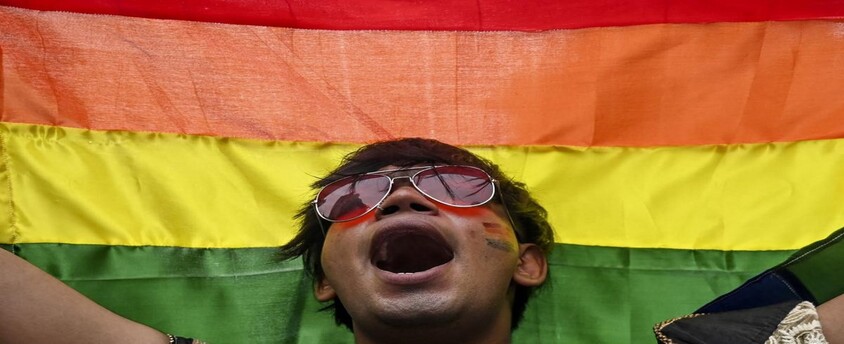
Why in News?
- The Supreme Court, in Supriyo v. Union of India, has referred the matter relating to legalisation of same-sex marriages to a Constitution Bench.
About the News:
- Unlike the matter pertaining to decriminalisation of Section 377, which the Central government had left to the Court to decide, the affidavit submitted by it in the present case opposes such legalisation.
- The Centre’s stance has come under fire from sections of civil society, advocates, academics and scholars.
What is Same-Sex Marriage?
- It is the practice of marriage between two men or between two women.
- Same-sex marriage has been regulated through law, religion, and custom in most countries of the world.
- As of 2022, marriage between same-sex couples is legally performed and recognized in more than 30 countries.
- The most recent country legalising it is Mexico.
About the Special Marriage Act:
- The Special Marriage Act is a special law enacted to provide for a unique form of marriage by registration wherein the parties to the marriage do not have to renounce their religion.
- This Act includes Hindus, Muslims, Christians, Sikhs, Jains, and Buddhists marriages.
- This act applies to all Indian states, except Jammu & Kashmir.
- This Act applies not only to Indian citizens who belong to different castes and religions but also to Indian nationals who live abroad.
Requirements for the Special Marriage:
- The fundamental requirement under this Act for a valid marriage is the consent of both parties to the marriage.
- If both parties to the marriage are willing to marry each other, that’s enough; caste, religion, race, etc. is not a restriction.
Current scenario in India:
- The acceptance of the institution of marriage between two individuals of the same gender is neither recognized nor accepted in any uncodified personal laws or any codified statutory laws”.
- The centre had also said that contrary to the popular view that homosexuality was legalized by the Supreme Court in the case of Navtej Singh Johar v. Union of India, the court had “only made a limited declaration to decriminalize a particular human behavior, which was a penal offence under S.377 IPC.“
- Observations in ‘Puttaswamy Judgment'(Privacy Case) and ‘Navtej Johar’ case (Section 377 was declared unconstitutional) do not confer a fundamental right to seek recognition of same-sex marriages.
Conditions for Marriage:
- The bridegroom must be at least 21, and at the time of the marriage, the bride must be at least 18 years of age.
- This is the minimum age limit respectively for a boy/girl to marry.
- At the time of their marriage, both parties must be monogamous; i.e., they must be unmarried and at that time should not have any living spouse.
- In order to be able to decide for themselves, the parties should be mentally fit, i.e., they must be sane at the time of marriage.
Challenges with Contemplating Laws:
- Contemplating laws to regulate matrimonial relationships between two consenting adults would not be just against the constitutional guarantees but would offend the very notion of individuality and basic freedoms.
- Interference of the law in an individual’s choice of marriage violates the existing constitutional rights such as the Right to equality, Right to Freedom & Personal Liberty, Freedom of Religion and Right to Life.
- Article 21: It declares that no person shall be deprived of his life or personal liberty except according to the procedure established by law. This right is available to both citizens and non-citizens.
Way Forward:
- In order to avoid inclusion of any further laws, there should be acceptance of the special marriage act, 1954 at the mental and social level. The rights should not be exploited.
- The marriage of two adults is a complete matter of their own choice, neither a law is to impose any decision, nor any individual. The freedom of decision of his/ her marriage shall lie with the person only. The need is to accept the fact.
AFSPA extended in parts of Arunachal Pradesh, Nagaland
25, Mar 2023
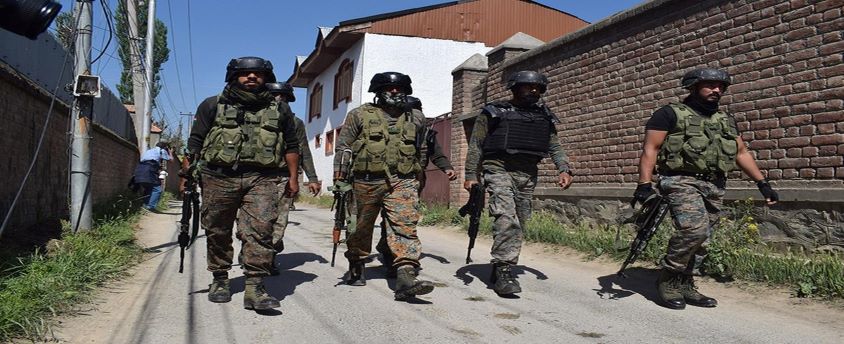
Why in News?
- The Union Home Ministry has extended for six months the “disturbed area” status in parts of Arunachal Pradesh and Nagaland under the Armed Forces (Special Powers) Act, 1958.
About the News:
- According to two separate notifications, the decisions have been taken after a review of the law-and-order situation in both States.
- The Home Ministry said the Central Government in exercise of the powers conferred by Section 3 of the AFSPA 1958 (28 of 1958) had declared the Tirap, Changlang and Longding districts in Arunachal Pradesh and the areas falling within the jurisdiction of Namsai and Mahadevpur police stations in Namsai district of Arunachal Pradesh, bordering the state of Assam as ‘disturbed area’ on September 30, 2022.
- One more police station area has been brought under the ambit of the AFSPA through the fresh notification.
What does the AFSPA mean?
- In simple terms, AFSPA gives armed forces the power to maintain public order in “disturbed areas”.
Powers given to armed forces:
- They have the authority to prohibit a gathering of five or more persons in an area, can use force or even open fire after giving due warning if they feel a person is in contravention of the law.
- If reasonable suspicion exists, the army can also arrest a person without a warrant; enter or search premises without a warrant; and ban the possession of firearms.
- Any person arrested or taken into custody may be handed over to the officer in charge of the nearest police station along with a report detailing the circumstances that led to the arrest.
What is a “disturbed area” and who has the power to declare it?
- A disturbed area is one which is declared by notification under Section 3 of the AFSPA. An area can be disturbed due to differences or disputes between members of different religious, racial, language or regional groups or castes or communities.
- The Central Government or the Governor of the State or administrator of the Union Territory can declare the whole or part of the State or Union Territory as a disturbed area.
Has there been any review of the Act?
- On November 19, 2004, the Central government appointed a five-member committee headed by Justice B P Jeevan Reddy to review the provisions of the act in the north eastern states.
- The committee submitted its report in 2005, which included the following recommendations: (a) AFSPA should be repealed and appropriate provisions should be inserted in the Unlawful Activities (Prevention) Act, 1967; (b) The Unlawful Activities Act should be modified to clearly specify the powers of the armed forces and paramilitary forces and (c) grievance cells should be set up in each district where the armed forces are deployed.
- The 5th report of the Second Administrative Reforms Commission on public order has also recommended the repeal of the AFSPA.
Right to Health
23, Mar 2023
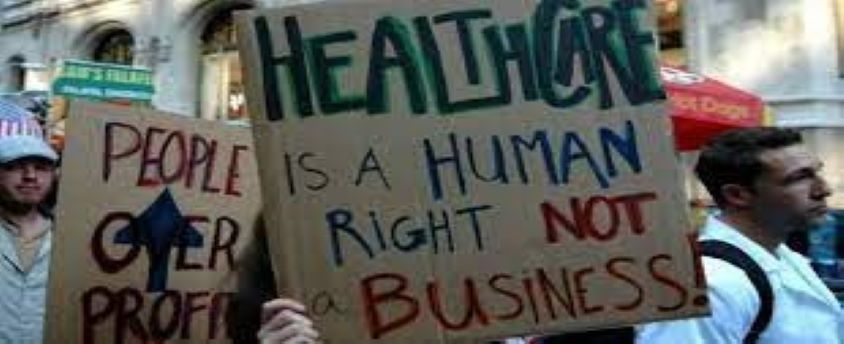
Why in News?
- Recently, the Rajasthan Government has passed the Right to Health Bill, which gives every resident of the state the right to avail free services at all public health facilities.
What are the Key Features of the Bill?
- Free healthcare services, including consultation, drugs, diagnostics, emergency transport, procedure and emergency care, will be provided at all public health institutions and select private facilities subject to conditions specified in the rules.
- The Bill makes it mandatory for the hospitals to provide treatment in emergency cases without waiting for medico-legal formalities and give medicines and transport facilities without charging money.
- The implementation of the law is expected to do away with out-of-pocket expenditure and bring transparency and accountability within the health care system.
What is the Right to Health?
- Right to health refers to and means the most attainable levels of health that every human being is entitled to.
- The origin of the right to health dates as far back as 1946 when the first international organization, World Health Organisation (WHO) came into existence to formulate health terms as human rights.
- The right to health is an essential component of human dignity, and it is the responsibility of governments to ensure that this right is protected and promoted for all individuals, regardless of their gender, race, ethnicity, religion, or socioeconomic status.
- Part IV of the Constitution under the Directive Principles of State Policy (DPSP) ensures social and economic justice to its citizens. Therefore, Part IV of the Constitution directly or indirectly relates to public policy in terms of health.
Related Provisions in India:
- International Conventions: India is a signatory of the Article 25 of the Universal Declaration of Human Rights (1948) by the United Nations that grants the right to a standard of living adequate for the health and well-being to humans including food, clothing, housing and medical care and necessary social services.
- Fundamental Rights: Article 21 of the Constitution of India guarantees a fundamental right to life & personal liberty. The right to health is inherent to a life with dignity.
- DPSP: Articles 38, 39, 42, 43, & 47 put the obligation on the state in order to ensure the effective realization of the right to health.
- Judicial Pronouncements: Supreme Court in Paschim Banga Khet Mazdoor Samity case (1996) held that in a welfare state, the primary duty of the government is to secure the welfare of the people and moreover it is the obligation of the government to provide adequate medical facilities for its people.
- Also, in its landmark judgment in Parmanand Katara Vs Union of India (1989), Supreme Court had ruled that every doctor whether at a government hospital or otherwise has the professional obligation to extend his services with due expertise for protecting life.
Significance:
- Right Based Healthcare Services: The people are entitled to the right to health, and it creates a compulsion for the government to take steps toward this.
- Wide Access to Health Services: Enables everyone to access the services and ensures that the quality of those services is good enough to improve the health of the people who receive them.
- Reduce Out of Pocket Expenditure: Protects people from the financial consequences of paying for health services out of their own pockets and reduces the risk of people getting pushed into poverty.
What are the Challenges Related to Right to Health in India?
Inadequate Healthcare Infrastructure:
- Despite recent improvements, India’s healthcare infrastructure remains inadequate, particularly in rural areas.
- India has 1.4 beds per 1,000 people, 1 doctor per 1,445 people, and 1.7 nurses per 1,000 people. Over 75% of the healthcare infrastructure is concentrated in metro cities, where only 27% of the total population resides—the rest 73% of the Indian population lack even basic medical facilities.
High Disease Burden:
- India has a high burden of communicable and non-communicable diseases, including tuberculosis, HIV/AIDS, malaria, and diabetes.
- Addressing these diseases requires significant investment in healthcare infrastructure and resources.
- According to a report by Frontiers in Public Health, more than 33% of the individuals are still suffering from infectious diseases out of the total ailing population in India.
- The per capita out-of-pocket (OOP) expenditure on infectious diseases is INR 7.28 and INR 29.38 in inpatient and outpatient care, respectively.
Gender Disparities:
- Women in India face significant health disparities, including limited access to healthcare, higher rates of maternal mortality, and gender-based violence.
- According to the World Economic Forum 2021, India consistently ranks among the five worst countries in the world for the health and survival of females.
- Women from poor households account for over 2,25,000 lesser hospital visits than men between 2017 and 2019 for nephrology, cardiology, and oncology services alone,
Limited Health Financing:
- India’s health financing system is limited, with low levels of public spending on healthcare. This limits the government’s ability to invest in healthcare infrastructure and resources, and it can lead to inadequate healthcare services for individuals.
- Government of India spent 2.1% of GDP on healthcare in FY23. This is much lower than the average health spending share of the GDP — at around 5.2% — of the Lower- and Middle-Income Countries (LMIC).
Way Forward:
- India needs to significantly increase its investment in healthcare infrastructure and resources, including medical facilities, equipment, and healthcare professionals. This can be achieved through increased public spending on healthcare and increased private sector investment.
- To improve access to healthcare, India needs to address the barriers that prevent individuals from accessing healthcare services, including financial constraints, transportation, and discrimination.
- This can be achieved through targeted policies and programs, such as health insurance schemes and mobile healthcare units.
- There is a need to create a designated and autonomous agency to perform the functions of disease surveillance, information gathering on the health impact of policies of key non-health departments, maintenance of national health statistics, enforcement of public health regulations, and dissemination of information to the public.
States must file counter-affidavits in anti-conversion law cases in three weeks, says SC
18, Mar 2023

Why in News?
- The Supreme Court recently gave States three more weeks to file counter-affidavits to petitions challenging their anti-religious conversion laws.
About the News:
- The court was hearing a petition, which said a special law should be enacted against forced conversions or the act should be incorporated as an offence in the Indian Penal Code.
- The petition has alleged “mass conversions” of socially and economically underprivileged people, particularly those belonging to the Scheduled Castes and the Scheduled Tribes.
Rationale behind the enactment of anti-conversion laws in India:
- Threats of forceful conversion.
- Problem of Inducement or allurement.
- Religious conversion is not a Fundamental Right.
What do critics say?
- Such laws have come under sharp criticism from several legal scholars who had contended that the concept of ‘love jihad’ did not have any constitutional or legal basis.
- They have pointed to Article 21 of the constitution which guarantees individuals the right to marry a person of one’s choice.
- Also, under Article 25, freedom of conscience, the practice and conversion of religion of one’s choice including not following any religion, are also guaranteed.
Supreme Court on Marriage and Conversion:
- The Apex Court of India in its several judgments has held that the state and the courts have no jurisdiction over an adult’s absolute right to choose a life partner.
- The Supreme Court of India, in both the Lily Thomas and Sarla Mudgal cases, has confirmed that religious conversions carried out without a bona fide belief and for the sole purpose of deriving some legal benefit do not hold water.
- Salamat Ansari-Priyanka Kharwar case of Allahabad High Court 2020: The right to choose a partner or live with a person of choice was part of a citizen’s fundamental right to life and liberty (Article 21).
Need of the hour:
- There is a need for uniformity: Article 18 of the Universal Declaration on Human Rights mentions everyone has the right to freedom of religion including changing their faith. Since it is a state subject, the Centre can frame a model law like Model law on contract farming etc.
- States while enacting anti-conversion laws should not put any vague or ambiguous provisions for the person who wanted to convert of his own will.
- The anti-conversion laws also need to include a provision to mention the valid steps for conversion by minority community institutions.
- People also need to be educated about the provisions and ways of Forceful conversions, Inducement or allurement, etc.
Friction over revenue sharing formula
17, Mar 2023

Why in News?
- The Centre’s tax collections are pooled-in from States and a part of it is distributed among them, based on the Finance Commission’s (FC) formula.
About the 15th Finance Commission:
- The Finance Commission (FC) is a constitutional body, that determines the method and formula for distributing the tax proceeds between the Centre and states, and among the states as per the constitutional arrangement and present requirements.
- Under Article 280 of the Constitution, the President of India is required to constitute a Finance Commission at an interval of five years or earlier.
- The 15th Finance Commission was constituted by the President of India in November 2017, under the chairmanship of NK Singh. Its recommendations will cover a period of five years from the year 2021-22 to 2025-26.
Vertical Devolution (Devolution of Taxes of the Union to States):
- It has recommended maintaining the vertical devolution at 41% – the same as in its interim report for 2020-21.
- It is at the same level of 42% of the divisible pool as recommended by the 14th Finance Commission.
- It has made the required adjustment of about 1% due to the changed status of the erstwhile State of Jammu and Kashmir into the new Union Territories of Ladakh and Jammu and Kashmir.
Horizontal Devolution (Allocation Between the States):
- For horizontal devolution, it has suggested 12.5% weightage to demographic performance, 45% to income, 15% each to population and area, 10% to forest and ecology and 2.5% to tax and fiscal efforts.
Revenue Deficit Grants to States:
- Revenue deficit grants emanate from the requirement to meet the fiscal needs of the States on their revenue accounts that remain to be met, even after considering their own tax and non-tax resources and tax devolution to them.
- Revenue Deficit is defined as the difference between revenue or current expenditure and revenue receipts, that includes tax and non-tax.
- It has recommended post-devolution revenue deficit grants amounting to about Rs. 3 trillion over the five-year period ending FY26.
- The number of states qualifying for the revenue deficit grants decreases from 17 in FY22, the first year of the award period to 6 in FY26, the last year.
Performance Based Incentives and Grants to States:
- These grants revolve around four main themes.
- The first is the social sector, where it has focused on health and education.
- Second is the rural economy, where it has focused on agriculture and the maintenance of rural roads.
- The rural economy plays a significant role in the country as it encompasses two-thirds of the country’s population, 70% of the total workforce and 46% of national income.
- Third, governance and administrative reforms under which it has recommended grants for judiciary, statistics and aspirational districts and blocks.
- Fourth, it has developed a performance-based incentive system for the power sector, which is not linked to grants but provides an important, additional borrowing window for States.
Fiscal Space for Centre:
- Total 15th Finance Commission transfers (devolution + grants) constitutes about 34% of estimated Gross Revenue Receipts to the Union, leaving adequate fiscal space to meet its resource requirements and spending obligations on national development priorities.
Grants to Local Governments:
- Along with grants for municipal services and local government bodies, it includes performance-based grants for incubation of new cities and health grants to local governments.
- In grants for Urban local bodies, basic grants are proposed only for cities/towns having a population of less than a million. For Million-Plus cities, 100% of the grants are performance-linked through the Million-Plus Cities Challenge Fund (MCF).
- MCF amount is linked to the performance of these cities in improving their air quality and meeting the service level benchmarks for urban drinking water supply, sanitation and solid waste management.
What is the Criticism?
- Performance based incentives disincentivizes independent decision-making. Any conditions on the state’s ability to borrow will have an adverse effect on the spending by the state, particularly on development thus, undermines cooperative fiscal federalism.
- It does not hold the Union government accountable for its own fiscal prudence and dilutes the joint responsibility that the Union and States have.
Horizontal Devolution Criteria:
- Population: The population of a State represents the needs of the State to undertake expenditure for providing services to its residents.
- It is also a simple and transparent indicator that has a significant equalising impact.
- Area: The larger the area, greater is the expenditure requirement for providing comparable services.
- Forest and Ecology: By taking into account the share of dense forest of each state in the aggregate dense forest of all the states, the share on this criteria is determined.
- Income Distance: Income distance is the distance of the Gross State Domestic Product (GSDP) of a particular state from the state with the highest GSDP.
- To maintain inter state equity, the states with lower per capita income would be given a higher share.
- Demographic Performance: It rewards efforts made by states in controlling their population.
- This criterion has been computed by using the reciprocal of the total fertility ratio of each state, scaled by 1971 population data.
- This has been done to assuage the fears of southern States about losing some share in tax transfers due to the reliance on the 2011 Census data instead of the 1971 census, which could penalise States that did better on managing demographics.
- States with a lower fertility ratio will be scored higher on this criterion.
- The Total Fertility Ratio in a specific year is defined as the total number of children that would be born to each woman if she/they were to pass through the childbearing years bearing children according to a current schedule of age-specific fertility rates.
- Tax Effort: This criterion has been used to reward states with higher tax collection efficiency.
- It has been computed as the ratio of the average per capita own tax revenue and the average per capita state GDP during the three-year period between 2016-17 and
2018-19.
Increase in minimum age of marriage for women to 21 years two years after Bill is notified, says Centre
16, Mar 2023
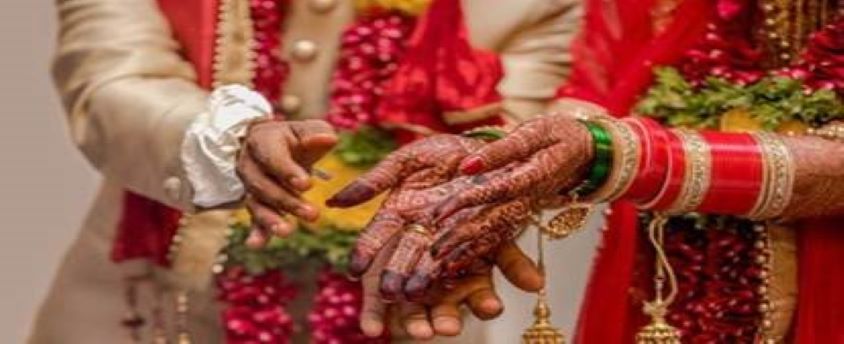
Why in News?
- The increase in minimum age of marriage for women to 21 years as provisioned in the Prohibition of Child Marriage Amendment Bill, 2021, would come into effect two years after the Bill is notified following its passage in Parliament.
Background of the issue:
- This decision is based on the recommendation of a panel led by Jaya Jaitly.
- Finance Minister Nirmala Sitharaman in her Budget speech 2021 proposed a panel on the “age of a girl entering motherhood” to lower maternal mortality rates and improve nutrition levels.
- But when the decision to appoint a task force was announced, its terms of reference included examining “the correlation of age of marriage and motherhood” with health and nutritional status of mothers and infants.
What are the important recommendations given by the house panel?
- The age of marriage should be increased to 21 years.
- The government should look into increasing access to schools and colleges for girls, including their transportation to these institutes from far-flung areas.
- Skill and business training has also been recommended, as has sex education in schools.
- These deliveries must come first, as, unless they are implemented and women are empowered, the law will not be as effective.
What is the Rationale behind the proposal?
- The committee has said the recommendation is not based on the rationale of population control (India’s total fertility rate is already declining) but more with women’s empowerment and gender parity.
- The committee has said access to education and livelihood must be enhanced simultaneously for the law to be effective.
Criticism:
- Women’s rights activists have opposed the suggestion and have cited evidence to show that such a move may be used to incarcerate young adults marrying without parents’ consent.
- Also, this move would lead to criminalisation of a large number of marriages that will take place once the law comes into effect.
What the law says?
- Currently, the law prescribes that the minimum age of marriage is 21 and 18 years for men and women, respectively.
- The minimum age of marriage is distinct from the age of majority, which is gender-neutral.
- An individual attains the age of majority at 18 as per the Indian Majority Act, 1875.
- For Hindus, Section 5(iii) of the Hindu Marriage Act, 1955 sets 18 years as the minimum age for the bride and 21 years as the minimum age for the groom. Child marriages are not illegal but can be declared void at the request of the minor in the marriage.
- In Islam, the marriage of a minor who has attained puberty is considered valid under personal law.
- The Special Marriage Act, 1954 and the Prohibition of Child Marriage Act, 2006 also prescribe 18 and 21 years as the minimum age of consent for marriage for women and men respectively.
Why is the law being relooked at?
- From bringing in gender-neutrality to reduce the risks of early pregnancy among women, there are many arguments in favour of increasing the minimum age of marriage of women.
- Early pregnancy is associated with increased child mortality rates and affects the health of the mother.
- Despite laws mandating minimum age and criminalising sexual intercourse with a minor, child marriages are very prevalent in the country.
- Also, according to a study, children born to adolescent mothers (10-19 years) were 5 percentage points more likely to be stunted (shorter for their age) than those born to young adults (20-24 years).
Current procedure for inclusion of communities in ST list adequate
16, Mar 2023
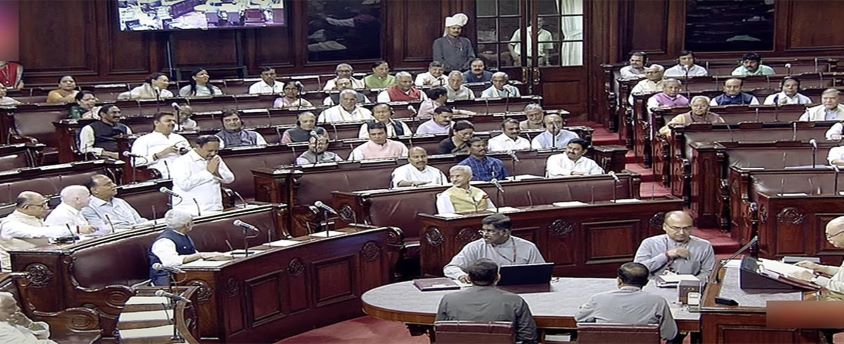
Why in News?
- The Tribal Affairs Ministry has insisted once again that the current procedure for inclusion of communities in the Scheduled Tribes list was “adequate”.
What are the Essential Characteristics for a Community to be Identified as Scheduled Tribe?
- According to Lokur Committee (1965), the essential characteristics are:
- Indication of Primitive Traits
- Distinctive Culture
- Shyness of Contact with the Community at Large
- Geographical Isolation
- Backwardness
What are the Basic Safeguards Provided by Indian Constitution for Scheduled Tribes?
- The Constitution of India does not endeavor to define the term ‘tribe’, however, the term Scheduled Tribe’ was inserted in the Constitution through Article 342 (i).
- It lays down that ‘the President may, by public notification, specify the tribes or tribal communities or parts of or groups within the tribes or tribal communities or parts which shall, for the purposes of this Constitution, be deemed to be Scheduled Tribes.
- The Fifth Schedule of the Constitution provides for the setting up a Tribes’ Advisory Council in each of the States having Scheduled Areas.
Educational & Cultural Safeguards:
- Article 15(4): Special provisions for advancement of other backward classes (it includes STs)
- Article 29: Protection of Interests of Minorities (it includes STs)
- Article 46: The State shall promote, with special care, the educational and economic interests of the weaker sections of the people, and in particular, of the Scheduled Castes, and the Scheduled Tribes, and shall protect them from social injustice and all forms of exploitation.
- Article 350: Right to conserve distinct Language, Script or Culture,
Political Safeguards:
- Article 330: Reservation of seats for STs in Lok Sabha,
- Article 332: Reservation of seats for STs in State Legislatures
- Article 243: Reservation of seats in Panchayats.
Administrative Safeguard:
- Article 275: It provides for the grant of special funds by the Union Government to the State Government for promoting the welfare of Scheduled Tribes and providing them with a better administration.
What are the Recent Government Initiatives For Scheduled Tribes?
- TRIFED
- Digital Transformation of Tribal Schools
- Development of Particularly Vulnerable Tribal Groups
- Pradhan Mantri Van Dhan Yojana
- Eklavya Model Residential Schools
What are the Problems Faced By Tribes in India?
- Loss of Control over Natural Resources: As India industrialized and natural resources were discovered in tribal inhabited areas, tribal rights were undermined and state control replaced tribal control over natural resources.
- With the concepts of protected forests and national forests gaining currency, the tribals felt themselves uprooted from their cultural moorings and with no secure means of livelihood.
- Lack of Education: In tribal areas, most schools lack basic infrastructure, including minimal learning materials and even minimal sanitary provisions.
- Due to the lack of immediate economic return from education, tribal parents prefer their children to be engaged in remunerative employment.
- Most tribal education programs are designed in official/regional languages, which are alien to tribal students.
- Displacement and Rehabilitation: Acquisition of tribal land by the government for the development process of core sectors like huge steel plants, power projects and large dams led to large scale displacement of the tribal population.
- The tribal pockets of Chotanagpur region, Orissa, West Bengal and Madhya Pradesh suffered the most.
- The migration of these tribals to the urban areas causes psychological problems for them as they are not able to adjust well to the urban lifestyle and values.
- Problems of Health and Nutrition: Due to economic backwardness and insecure livelihood, the tribals face health problems, such as the prevalence of disease, like malaria, cholera, diarrhea and jaundice.
- Problems associated with malnutrition like iron deficiency and anemia, high infant mortality rates, etc. also prevail.
- Gender Issues: The degradation of the natural environment, particularly through the destruction of forests and a rapidly shrinking resource base, has its impact on the status of women.
- The opening of the tribal belts to mining, industries and commercialization has exposed tribal men and women to the ruthless operations of the market economy, giving rise to consumerism and to commoditization of women.
- Erosion of Identity: Increasingly, the traditional institutions and laws of tribals are coming into conflict with modern institutions which create apprehensions among the tribals about preserving their identity.
- Extinction of tribal dialects and languages is another cause of concern as it indicates an erosion of tribal identity.
Same Sex Marriage
13, Mar 2023

Why in News?
- The Centre in the Supreme Court frowned upon same-sex marriage while invoking the “accepted view” that a marriage between a biological man and woman is a “holy union, a sacrament and a sanskar” in India.
What is Same-Sex Marriage?
- It is the practice of marriage between two men or between two women.
- Same-sex marriage has been regulated through law, religion, and custom in most countries of the world.
- As of 2022, marriage between same-sex couples is legally performed and recognized in more than 30 countries.
- The most recent country legalising it is Mexico.
About the Special Marriage Act:
- The Special Marriage Act is a special law enacted to provide for a unique form of marriage by registration wherein the parties to the marriage do not have to renounce their religion.
- This Act includes Hindus, Muslims, Christians, Sikhs, Jains, and Buddhists marriages.
- This act applies to all Indian states, except Jammu & Kashmir.
- This Act applies not only to Indian citizens who belong to different castes and religions but also to Indian nationals who live abroad.
Requirements for the Special Marriage:
- The fundamental requirement under this Act for a valid marriage is the consent of both parties to the marriage.
- If both parties to the marriage are willing to marry each other, that’s enough; caste, religion, race, etc. is not a restriction.
Current scenario in India:
- The acceptance of the institution of marriage between two individuals of the same gender is neither recognized nor accepted in any uncodified personal laws or any codified statutory laws”.
- The centre had also said that contrary to the popular view that homosexuality was legalized by the Supreme Court in the case of Navtej Singh Johar v. Union of India, the court had “only made a limited declaration to decriminalize a particular human behavior, which was a penal offence under S.377 IPC.“
- Observations in ‘Puttaswamy Judgment'(Privacy Case) and ‘Navtej Johar’ case (Section 377 was declared unconstitutional) do not confer a fundamental right to seek recognition of same-sex marriages.
Conditions for Marriage:
- The bridegroom must be at least 21, and at the time of the marriage, the bride must be at least 18 years of age.
- This is the minimum age limit respectively for a boy/girl to marry.
- At the time of their marriage, both parties must be monogamous; i.e., they must be unmarried and at that time should not have any living spouse.
- In order to be able to decide for themselves, the parties should be mentally fit, i.e., they must be sane at the time of marriage.
Challenges with Contemplating Laws:
- Contemplating laws to regulate matrimonial relationships between two consenting adults would not be just against the constitutional guarantees but would offend the very notion of individuality and basic freedoms.
- Interference of the law in an individual’s choice of marriage violates the existing constitutional rights such as the Right to equality, Right to Freedom & Personal Liberty, Freedom of Religion and Right to Life.
- Article 21: It declares that no person shall be deprived of his life or personal liberty except according to the procedure established by law. This right is available to both citizens and non-citizens.
Way Forward:
- In order to avoid inclusion of any further laws, there should be acceptance of the special marriage act, 1954 at the mental and social level. The rights should not be exploited.
- The marriage of two adults is a complete matter of their own choice, neither a law is to impose any decision, nor any individual. The freedom of decision of his/ her marriage shall lie with the person only. The need is to accept the fact.
TN Speaker suspects ‘pressure’ on Governor for ‘changing’ decision on Bill banning online gambling
11, Mar 2023
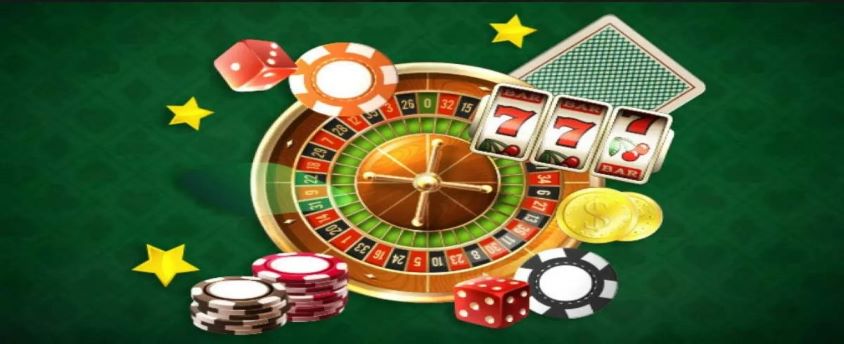
Why in News?
- Tamil Nadu Assembly Speaker M. Appavu said that he suspected that there was “some pressure” on Governor R.N. Ravi following which he returned the Bill that proposed to ban online gambling and regulate online games.
Veto over State Bills:
- The governor is empowered to reserve certain types of bills passed by the state legislature for the consideration of the President. Then, the Governor will not have any further role in the enactment of the bill.The President can withhold his assent to such bills not only in the first instance but also in the second instance.
- Thus, the President enjoys absolute veto (and not suspensive veto) over state bills.
- Further, the President can exercise pocket veto in respect of state legislation also.
Can a state Negate Central Laws?
- Article 254(2) refers to a scenario where a law made by a state legislature concerning any matter that falls in the Concurrent List contains any provision repugnant to the provisions of an earlier law made by Parliament or an existing law, with respect to that matter.
- In such a case, the law made by the state legislature will prevail, provided it is reserved for the consideration of the President of India and receives his assent.
How can states use this provision?
- This provision gives flexibility to a state legislature to make a law different from what is applicable in that state due to a parliamentary law already in operation there.
- This flexibility is only available on matters that are in the concurrent list to Schedule 7 of the Constitution. Under that list both the Parliament and the state legislatures could legislate — subject to the rule that the parliamentary law will prevail over a state law.
What all is covered under concurrent list?
- The concurrent list provides a rich set of topics for the states to take a lead in reform. It covers areas such as criminal law and procedure, marriage, divorce and adoption, bankruptcy and insolvency, social security, education (including technical and medical education) and electricity.
- Agriculture’ has been placed as Entry 14 in the State List along with several ancillary matters, while some agriculture-related items have been included in the Union List and the Concurrent List.
Will this provision help the states?
- Though states could come out with their own Bills to some extent to override the statutes of passed by the Parliament, none of those Bills would be effective unless the President accords his consent to such Bills.
What happens if President does not give consent?
- According to legal experts, it’s the sole prerogative of the President whether to sign the state Bills or not. It’s a rare circumstance, wherein a state Bill is accepted by the President without the Centre on board.
- In case, the Centre is opposing the Bill, then the President, who works on the aid and advice of the Council of Ministers, can refuse to give his consent.
Can states approach the Supreme Court challenging the central law?
- States can approach the Supreme Court under Article 131 — invoking the court’s “original jurisdiction” — that allows a state to file a suit in the Supreme Court in case of any dispute that it may have with the central government.
- Article 131 could be used to examine the constitutionality of a statute.
Karnataka Hijab Ban
04, Mar 2023
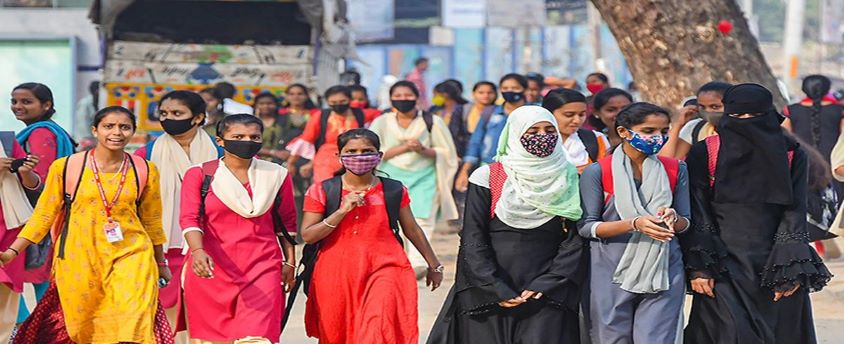
Why in News?
- Chief Justice of India D.Y. Chandrachud has recently said he may “create a Bench” to hear the hijab ban case from Karnataka, though not actually zeroing in on a date of hearing.
What was the split verdict given previously?
- Justice Gupta said ‘secularity’ meant uniformity, manifested by parity among students in terms of uniform.
- Justice Gupta held that adherence to uniform was a reasonable restriction to free expression.
- The discipline reinforced equality. The State had never forced students out of State schools by restricting hijab. The decision to stay out was a “voluntary act” of the student.
- In his divergent opinion, Justice Sudhanshu Dhulia said secularity meant tolerance to “diversity”. Wearing or not wearing a hijab to school was “ultimately a matter of choice”. For girls from conservative families, “her hijab is her ticket to education”.
- Asking the girls to take off their hijab before they enter the school gates, is first, an invasion of their privacy, then it is an attack on their dignity, and then ultimately it is a denial to them of secular education.
- There shall be no restriction on the wearing of hijab anywhere in schools and colleges in Karnataka.
- He further remarked that one of the best sights in India was a girl going to school like her brother.
- The case would now be re-heard by a larger Bench.
How is religious freedom protected under the Constitution?
- Article 25(1) of the Constitution guarantees the freedom of conscience and the right freely to profess, practise and propagate religion.
- It is a right that guarantees negative liberty — which means that the state shall ensure that there is no interference or obstacle to exercising this freedom.
- Limitations: Like all fundamental rights, the state can restrict the right for grounds of public order, decency, morality, health and other state interests.
Observations previously made by the Supreme Court in this matter:
- People have a right under the Constitution to profess, practice and propagate religion (Article 25).
- Every person is the final judge of his/her choice of religion or who their life partner should be. Courts cannot sit in judgment of a person’s choice of religion or life partner.
Religious faith is a part of the fundamental right to privacy:
- Shirur Mutt case in 1954: The doctrine of “essentiality” was invented by the Supreme Court. The court held that the term “religion” will cover all rituals and practices “integral” to a religion, and took upon itself the responsibility of determining the essential and non-essential practices of a religion.
What are the court’s previous rulings on Hijab?
- In Amna Bint Basheer v Central Board of Secondary Education (2016), the Kerala High Court held that the practice of wearing a hijab constitutes an essential religious practise but did not quash the dress code prescribed by CBSE. It rather provided additional safeguards, such as examining students wearing full sleeves when needed.
- In Fathima Tasneem v State of Kerala (2018), Kerala HC held that collective rights of an institution would be given primacy over the individual rights of the petitioner. The case involved two girls who wanted to wear the headscarf. The school refused to allow the headscarf. However, the court dismissed the appeal as students were no more in the rolls of the respondent-School.
India calls upon G20 countries for faster extradition of fugitive economic offenders
02, Mar 2023
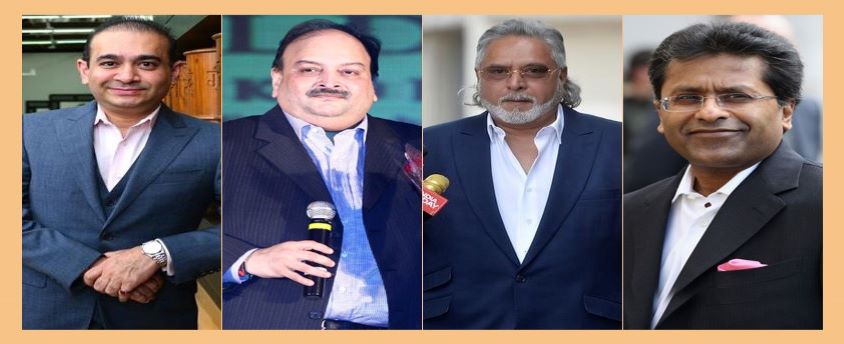
Why in News?
- India has called upon G20 countries to adopt multilateral action for faster extradition of fugitive economic offenders and recovery of assets both on domestic front as well as from abroad, during the first anti-corruption working group meeting held in Gurugram, on the outskirts of Delhi.
Who is a Fugitive Economic Offender?
- A person can be named an offender under this law if there is an arrest warrant against him or her for committing any offence listed in the schedule of the act and for involvement in economic offences involving at least Rs. 100 crore or more and has fled from India to escape Legal Action.
- Major criteria that have to be satisfied are:
- The Person has left the country to avoid facing prosecution.
- He refuses to return to India to face prosecution.
About Fugitive Economic Offenders Act, 2018:
- The Fugitive Economic Offenders Act, 2018 seeks to confiscate properties of economic offenders who have left the country to avoid facing criminal prosecution.
- Offences involving amounts of Rs. 100 crore or more fall under the purview of this law.
- Some of the offences listed in the schedule of the bill are-counterfeiting government stamps or currency, cheque dishonour for insufficiency of funds, money laundering, transactions defrauding creditors etc.
What are its proceedings as per the Act?
- To declare a person an FEO, an application will be filed in a Special Court (designated under the Prevention of Money-Laundering Act, 2002) containing details of the properties to be confiscated, and any information about the person’s whereabouts.
- The Special Court will require the person to appear at a specified place at least six weeks from issue of notice. Proceedings will be terminated if the person appears.
- Attachment of the property of a fugitive economic offender.
- Confiscation of the property of an individual declared as a fugitive economic offender resulting from the proceeds of crime. Confiscation of other property belonging to such offender in India and abroad including benami property.
- Disentitlement of the fugitive economic offender from defending any civil claim.
- All cases under the proposed law will be tried under the Prevention of Money Laundering (PMLA) Act and the administrator will sell the fugitive’s properties to pay off the lenders.
- The proposed law will have an overriding effect over all other pieces of legislation.
What is Extradition?
- It is the formal process of one state surrendering an individual to another state for prosecution or punishment for crimes committed in the requesting country’s jurisdiction.
- This is generally enabled through a bilateral or multilateral treaty.
- The legal basis for extradition with countries with which India does not have an Extradition treaty is provided by Section 3 (4) of the Indian Extradition Act, 1962.
About Indian Extradition Act, 1962:
- In India, the extradition of a fugitive criminal is governed under the Indian Extradition Act, 1962. This is for both extraditing of persons to India and from India to foreign countries. The basis of the extradition could be a treaty between India and another country. India has extradition treaties with 39 countries currently.
- Example, underworld don Abu Salem was extradited from Portugal to India to face charges. He, along with his wife, was extradited on the conditions that they would not be given the death penalty in India. This was so because European law prevents extradition to a country where capital punishment is in practice.
What is the Extradition Procedure in India?
- Information about the fugitive criminals wanted in foreign countries is received from the country or through Interpol.
- The Interpol wing of the CBI then passes the information to the concerned police departments.
- The information is also passed on to the immigration authorities.
- Then, action can be taken under the 1962 act.
Way Forward:
- Extradition is as much a political process as it is a judicial one.
- The expeditious processing of extradition requests and the commitment to prepare for and defend the case before Courts depends on bilateral relations and the opportune use of diplomacy and negotiations to push for the process by the requested country.
- India needs to take steps to dispel concerns regarding poor prison conditions and potential human rights violations of the requested person.
- India could consider signing international instruments, such as the UN Convention against Torture (1984) to establish India’s zero tolerance towards torture and custodial violence.
- For addressing investigational delays, it is imperative to improve the capacity and organizational efficiencies of law enforcement agencies so that they may conduct speedy investigation in these cases.
- To ensure that India’s extradition requests are in compliance with treaty conditions and documentary requirements, India must put in place suitable organizational mechanisms to familiarize itself with laws and regulations of treaty states.
- India could adopt the good practices of the US’ Office of International Affairs (OIA), Washington’s primary body to handle extradition requests, and employ lawyers and station trained liaison officers in countries with which the country has extradition relations.
Foreign Contribution (Regulation) Act
02, Mar 2023
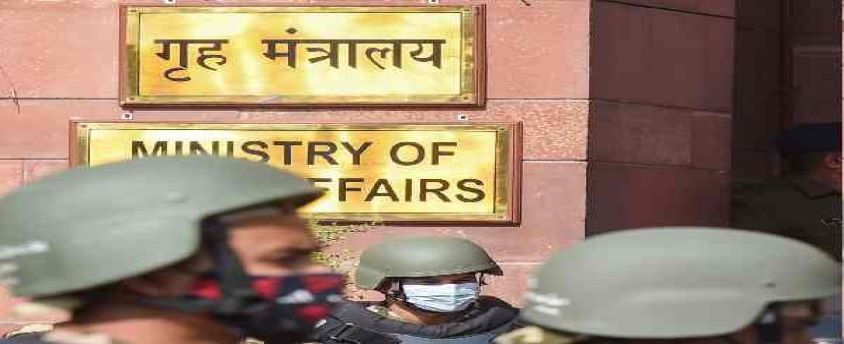
Why in News?
- The Ministry of Home Affairs (MHA) has suspended the Foreign Contribution (Regulation) Act (FCRA) registration of the Centre for Policy Research (CPR), a Delhi-based think tank, for 180 days.
How FCRA regulates NGO funding?
- FCRA regulates foreign donations and ensures that such contributions do not adversely affect the internal security of the country.
- The Act, first enacted in 1976 was amended in the year 2010 and then 2020.
- Section 5 of the Foreign Contribution (Regulation) Act, 2010 gives the Union government “unchecked and unbridled powers” to declare an organisation as being one of political nature and deny it access to funds from sources abroad.
- FCRA is implemented by the Ministry of Home Affairs.
Applicability:
- The provisions of the Act apply to the territory of India, to citizens of India who may be outside India and to companies or their branches outside India that are registered or incorporated in India.
- The entities covered by the Act include an individual, a Hindu undivided family, an association, or a registered company.
For how long is approval granted?
- Once granted, FCRA registration is valid for five years. NGOs are expected to apply for renewal within six months of the date of expiry of registration.
- In case of failure to apply for renewal, the registration is deemed to have expired, and the NGO is no longer entitled to receive foreign funds or utilise its existing funds without permission from the ministry.
Prior Reference Category under the Act:
- It implies that to donate to such an NGO, a foreign donor has to take prior clearance from the Ministry of Home Affairs.
What Is A Foreign Contribution Under FCRA?
- “Foreign contribution” under FCRA covers any “donation, delivery or transfer made by any foreign source of any article” as long as it is not given as a gift for personal use, or if its market value in India at the time it was made is “not more than such sum as may be specified from time to time by the Central government”.
Exceptions:
- Any currency, or security can fall under the ambit of the Act though it excludes any money received “by way of fee or towards cost in lieu of goods or services rendered by such person in the ordinary course of his business, trade or commerce whether within India or outside India”.
- Neither are donations made by Non-Resident Indians (NRIs) considered to be “foreign contribution” although a donation from a person of Indian origin who has assumed foreign nationality is treated as as “foreign contribution”.
Who Cannot Receive Foreign Contribution?
- A host of entities are barred from receiving foreign funds, including election candidates, those connected with a registered newspaper, judges, government servants or employees of any entity controlled or owned by the government and members of any legislature. Political parties and their office bearers, too, are prohibited from receiving foreign funds.
Issues in OTT platforms
28, Feb 2023
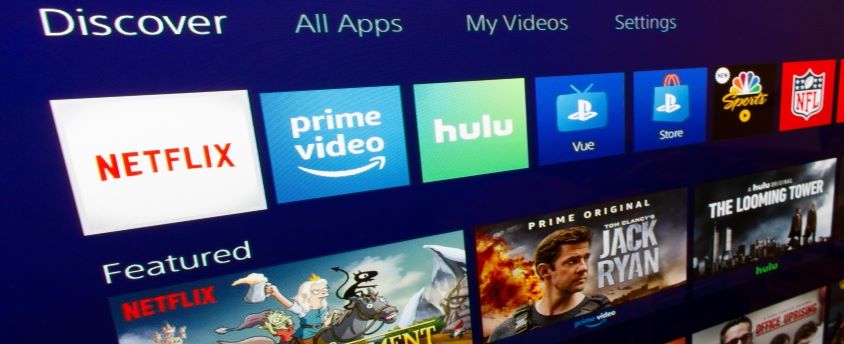
Why in News?
- Even after two years of issuing the Information Technology (Intermediary Guidelines and Digital Media Ethics Code) Rules there has not been much improvement in the regulation of OTT platforms.
Overview of the IT rules:
- It mandates a grievance redressal system for over the top (OTT) and digital portals in the country. This is necessary for the users of social media to raise their grievance against the misuse of social media.
- Significant social media firms have to appoint a chief compliance officer and have a nodal contact person who can be in touch with law enforcement agencies 24/7.
- A grievance officer: Social media platforms will also have to name a grievance officer who shall register the grievance within 24 hours and dispose of it in 15 days.
- Removal of content: If there are complaints against the dignity of users, particularly women – about exposed private parts of individuals or nudity or sexual act or impersonation etc – social media platforms will be required to remove that within 24 hours after a complaint is made.
- A monthly report: They also will have to publish a monthly report about the number of complaints received and the status of redressal.
- There will be three levels of regulation for news publishers — self-regulation, a self-regulatory body, headed by a retired judge or an eminent person, and oversight from the Information and Broadcasting Ministry, including codes of practices and a grievance committee.
What is a significant social media intermediary and benefits obtained under it?
- Social media companies with more than 50 lakh registered users will be considered ‘significant social media intermediaries’, as per the new norms.
What happens in case of non compliance?
- Social media giants such as Facebook, Twitter, Instagram and WhatsApp messenger could face a ban if they do not comply with the new Information Technology rules.
- They also run the risk of losing their status as “intermediaries” and may become liable for criminal action if they do not comply with the revised regulations.
What are the Concerns being raised?
- Various industry bodies have written to the government for up to a one-year compliance window, particularly in view of the pandemic.
- Concerns have also been expressed over potential unavailability of ‘safe harbour’ protection given to intermediaries under Section 79 of the IT Act, under the new rules.
- They have requested a re-think over a clause in the new rules which can lead to imposition of criminal liability upon the employees for non-compliance by intermediaries, asking for it to be dropped in the interest of ease of doing business.
- Originator traceability mandate in end-to-end encrypted platforms could end up weakening the security architecture of the platform. This could render the entire citizenry susceptible to cyberattacks by hostile actors.
- Additionally, the extant data retention mandate entailed risking privacy of users in India and abroad in addition to security risks and technical complexities which requires a lot of time for development and testing before integration with the existing ecosystem.
Naga Peace Process
25, Feb 2023
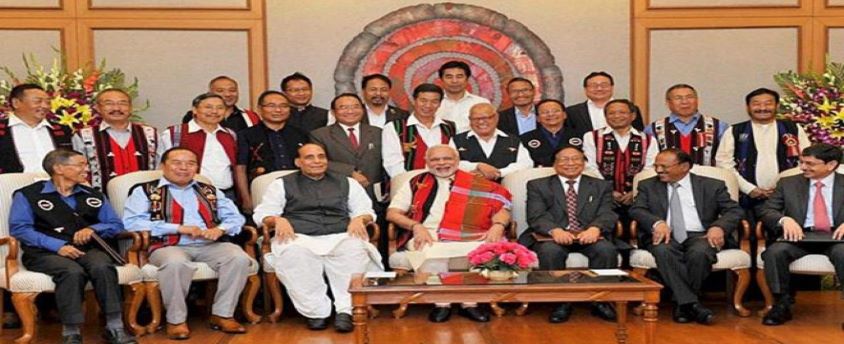
Why in News?
- Nagaland Chief Minister Neiphiu Rio has recently exuded confidence that the ongoing Naga peace talks will reach a “meaningful convergence” under Prime Minister Narendra Modi.
Background:
- The Union government is engaged in discussions with the Isak-Muivah faction of the National Socialist Council of Nagaland (NSCN-IM) and seven Naga National Political Groups (NNPGs) to find a solution to the Naga political issue.
- The outcome of the negotiation is shrouded in mystery since 2015 when the Union Government, under the then interlocutor R. N Ravi, presently the Governor of Tamil Nadu, signed a framework agreement with the NSCN-IM to find a solution to the issue.
- The dialogue between the Union Government and the NSCN-IM collapsed in 2020 when the largest Naga group refused to hold any further talks with Mr. Ravi. Union Home Minister Amit Shah then deputed two Intelligence Bureau officers to carry forward the negotiations.
- A consultative meeting of all stakeholders, including mass-based civil societies, church organisations, tribal hohos, political parties and NGOs, was held at the State Banquet Hall in Kohima on the invitation of the State Government of Nagaland. After the meeting, the House adopted the resolution that “the Naga people are yearning for an early political solution.”
- It added that elections to the Urban Local Bodies (ULB) should be conducted as per the 74th Amendment Act of the Constitution that grants 33% reservation to women. Nagaland had erupted in protests in 2017 against the said reservation.
- The Naga peace talks were also impacted by the incident on December 4, 2021 when six villagers returning from a coal mine were killed in an operation by para commandos of the Assam Rifles in Nagaland’s Mon district. Seven more were killed in Army firing after protests broke out.
- Nagaland and Naga-inhabited areas in neighbouring States saw a shutdown with a strong demand to repeal the Armed Forces (Special Powers) Act (AFSPA), which gives unbridled power to the armed forces to conduct operations.
How old is the Naga political issue?
Pre- independence:
- The British annexed Assam in 1826, and in 1881, the Naga Hills too became part of British India.
- The first sign of Naga resistance was seen in the formation of the Naga Club in 1918, which told the Simon Commission in 1929 “to leave us alone to determine for ourselves as in ancient times”.
- In 1946 came the Naga National Council (NNC), which declared Nagaland an independent state on August 14, 1947.
- The NNC resolved to establish a “sovereign Naga state” and conducted a “referendum” in 1951, in which “99 per cent” supported an “independent” Nagaland.
Post- independence:
- On March 22, 1952, the Naga Federal Government (NFG) and the Naga Federal Army (NFA) were formed. The Government of India sent in the Army to crush the insurgency and, in 1958, enacted the Armed Forces (Special Powers) Act.
Agreement in this regard:
- The NSCN (IM) entered into a ceasefire agreement with the Centre in 1997 and the two have been holding talks since then, while a conglomerate of seven different Naga national political groups (NNPGs) also got into separate talks with the Centre since 2017.
- The Centre signed a “framework agreement” with NSCN (IM) in 2015, and an “agreed position” with the NNPGs in 2017.
- However, the NSCN (IM)’s demand for a separate Naga flag and constitution has been a delaying factor in signing a final deal on the protracted Naga political issue.
Bihar caste Census survey to begin from January 7
07, Jan 2023

Why in News?
- The Bihar government led by Chief Minister Nitish Kumar is to start the first phase of caste based survey in the State from January 7, which will end on January 21.
About the Issue:
- The number of all households in the State will be counted and recorded in the first phase, while in second phase of the survey which is to start from April 1 to April 30, people living in the households, their castes, sub-castes, socio-economic conditions etc. will be collected.
- The decennial census is conducted by the Census Commissioner of India under the Census of India Act, 1948.
- The state does not have the power to conduct a census.
- The states can collect data or headcount of the population for the implementation of welfare schemes or other purposes.
- This may be done either under existing state legislation and rules or new legislation may be enacted under item 45 of List III (Concurrent List) of the Seventh Schedule of the Constitution for socio-economic development of the state.”
- The central government accepted recommendations to use the Socio-Economic Caste Census in 2017:
- It will help in the identification of beneficiaries and transferring of funds for social schemes.
- It aims to bring out the unseen aspects of caste groups and their share in resources.
Why Caste Census is difficult?
- SECC that was first conducted in 2011 and collected data of 130 crore Indians threw up 46 lakh different caste names whereas the total number of castes as per the last caste census of 1931 was 4,147 at the national level.
- Owing to the flaws in the data set, government has refused to make public even the raw caste data of the SECC-2011. The SECC-2011 collected data of all castes and not only OBCs.
- There are separate OBC lists at the State-level and the Centre for reservation in government jobs and education.
What is a Census?
- The origin of the Census in India goes back to the colonial exercise of 1881.
- Census has evolved and been used by the government, policymakers, academics, and others to capture the Indian population, access resources, map social change, delimitation exercise, etc.
- However, as early as the 1940s, W.W.M. Yeatts, Census Commissioner for India for the 1941 Census, had pointed out that “the census is a large, immensely powerful, but blunt instrument unsuited for specialized inquiry.”
What is SECC 2011?
- The Socio-Economic Caste Census of 2011 was a major exercise to obtain data about the socio-economic status of various communities.
- It had two components: a survey of the rural and urban households and ranking of these households based on pre-set parameters, and a caste census.
- However, only the details of the economic conditions of the people in rural and urban households were released. The caste data has not been released till now.
- SECC 2011 was conducted by three separate authorities but under the overall coordination of Department of Rural Development in the Government of India.
- Census in Rural Area has been conducted by the Department of Rural Development (DoRD).
- Census in Urban areas is under the administrative jurisdiction of the Ministry of Housing and Urban Poverty Alleviation (MoHUPA).
- Caste Census is under the administrative control of Ministry of Home Affairs: Registrar General of India (RGI) and Census Commissioner of India.
Difference between Census & SECC:
- The Census provides a portrait of the Indian population, while the SECC is a tool to identify beneficiaries of state support.
- Since the Census falls under the Census Act of 1948, all data are considered confidential, whereas all the personal information given in the SECC is open for use by Government departments to grant and/or restrict benefits to households.
How have caste details been collected so far?
- While SC/ST details are collected as part of the census, details of other castes are not collected by the enumerators. The main method is by self-declaration to the enumerator.
- So far, backward classes commissions in various States have been conducting their own counts to ascertain the population of backward castes.
What kind of caste data is published in the Census?
- Every Census in independent India from 1951 to 2011 has published data on Scheduled Castes and Scheduled Tribes, but not on other castes. Before that, every Census until 1931 had data on caste.
Pros of caste census:
- The precise number of the population of each caste would help tailor the reservation policy to ensure equitable representation of all of them.
Concerns associated:
- There is a possibility that it will lead to heartburn among some sections and spawn demands for larger or separate quotas.
- It has been alleged that the mere act of labelling persons as belonging to a caste tends to perpetuate the system.
Expedite categorisation of denotified, nomadic, semi-nomadic tribes
27, Dec 2022

Why in News?
- The Parliamentary panel on Social Justice and Empowerment has pulled up the Union government over the “very slow” process to categorise over 260 denotified, nomadic and semi-nomadic tribes under either the SC/ST/OBC lists, which government officials have pointed to for the delay in the approval of benefits under the SEED (Scheme for Economic Empowerment of DNTs) scheme launched in February this year.
Who are de-notified, nomadic and semi-nomadic tribes?
- They are communities that were ‘notified’ as being ‘born criminals’ during the British regime under a series of laws starting with the Criminal Tribes Act of 1871.
- They are the most vulnerable and deprived.
- The Renke commission estimated their population at around 10.74 crore based on Census 2001. 1,262 communities have been identified as de-notified, nomadic and semi-nomadic.
Measures for their welfare:
- The National Commission for De-notified, Nomadic and Semi-Nomadic Tribes (NCDNT) was constituted in 2006. It was headed by Balkrishna Sidram Renke.
- Scheme for economic empowerment of DNT communities: It has been formulated to provide coaching, health insurance, facilitate livelihood and financial assistance for construction of homes for the members of DNT.
- The Development and Welfare Board for De-notified, Nomadic and Semi-Nomadic Communities (DWBDNC) has been set up in 2019 under the Societies Registration Act, 1860 under the aegis of Ministry of Social Justice and Empowerment for the purpose of implementing welfare programmes.
- A committee has been set up by the NITI Aayog to complete the process of identification.
- Ethnographic studies of DNCs are being conducted by the Anthropological Survey of India, with a budget of Rs 2.26 crore sanctioned.
What are the issues now?
- Lack of Constitutional Support: These tribes somehow escaped the attention of our Constitution makers and thus got deprived of the Constitutional support unlike Scheduled Castes and Scheduled Tribes.
- No categorisation: A number of these tribes are categorised under SC, ST and OBC, many are not. However, 269 DNT communities are not covered under any reserved categories.
- No money spent in 2021-22 under the Scheme for economic empowerment of DNT communities.
- Budgetary allocation has been reduced to Rs 28 crore for 2022-23 against the budgetary allocation of Rs 50 crore for 2021-22.
- Issues with the functioning of the Development and Welfare Board for De-notified, Nomadic and Semi-Nomadic Communities (DWBDNC).
- There is no permanent commission for these communities.
Reasons for their deprivation:
- These communities are largely politically ‘quiet’. They lack vocal leadership and also lack the patronage of a national leader.
- Lack of education.
- Small and scattered numbers.
Associated commissions and committees:
- Criminal Tribes Inquiry Committee, 1947 constituted in the United Provinces (now Uttar Pradesh), Ananthasayanam Ayyangar Committee in 1949 (it was based on the report of this committee the Criminal Tribes Act was repealed), and Kaka Kalelkar Commission (also called first OBC Commission) constituted in 1953.
The Doctrine of Separation of Powers
08, Dec 2022

Why in News?
- Rajya Sabha chairperson Jagdeep Dhankhar recently said any incursion by the three organs of the government into each other’s domains has the potential to upset the governance apple cart and asserted that all should respect the “laxman rekha”.
What’s the issue?
- There has been a “rush to file PILs on almost every issue” nowadays.
What is the doctrine of Separation of Power?
- It refers to the model of governance where the executive, legislative and judicial powers are not concentrated in one body but instead divided into different branches.
- It is not explicitly mentioned in the constitution.
- Articles in the Constitution facilitating Separation of Powers are as follows.
- Article 50: State shall take steps to separate the judiciary from the executive. This is for the purpose of ensuring the independence of the judiciary.
- Article 122 and 212: Validity of proceedings in Parliament and the Legislatures cannot be called into question in any Court. Also, Legislators enjoy certain privileges with regard to speech and anything said in the Parliament cannot be used against them.
- Judicial conduct of a Judge of the Supreme Court and the High Court cannot be discussed in the Parliament and the State Legislature, according to Article 121 and 211 of the Constitution.
- Articles 53 and 154 respectively, provide that the executive power of the Union and the State shall be vested with the President and the Governor and they enjoy immunity from civil and criminal liability.
- Article 361: The President or the Governor shall not be answerable to any court for the exercise and performance of the powers and duties of his office.






